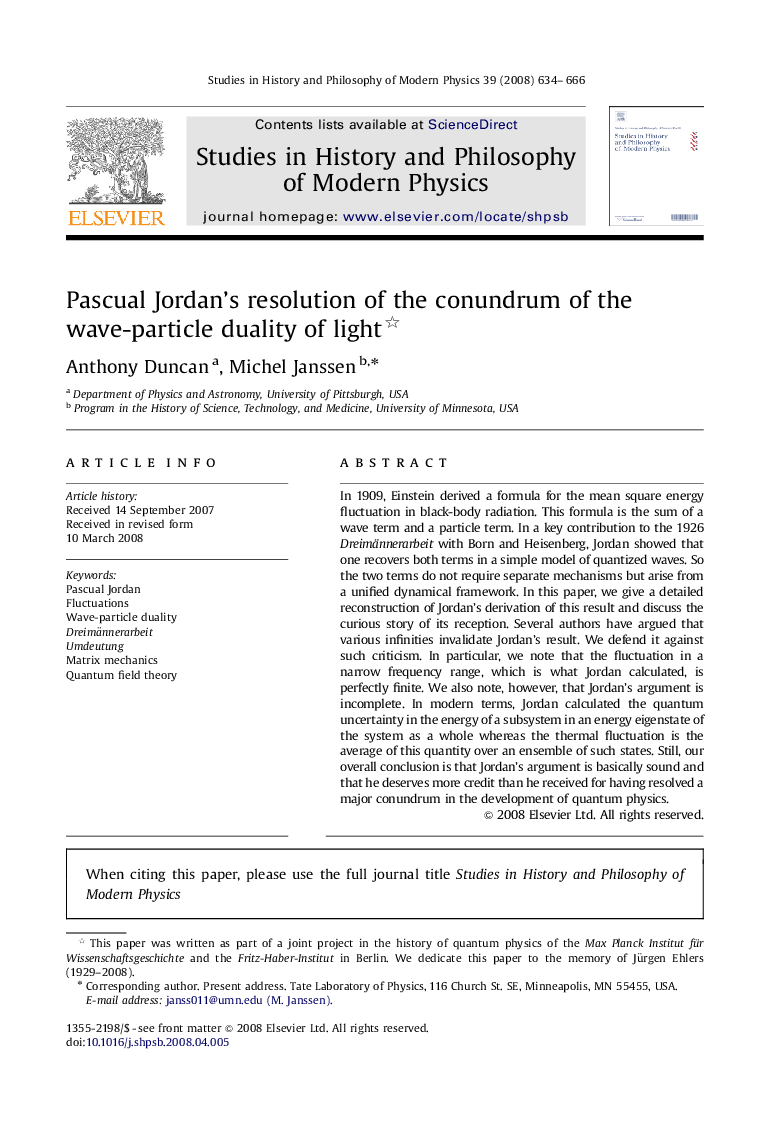| Article ID | Journal | Published Year | Pages | File Type |
|---|---|---|---|---|
| 1161348 | Studies in History and Philosophy of Science Part B: Studies in History and Philosophy of Modern Physics | 2008 | 33 Pages |
In 1909, Einstein derived a formula for the mean square energy fluctuation in black-body radiation. This formula is the sum of a wave term and a particle term. In a key contribution to the 1926 Dreimännerarbeit with Born and Heisenberg, Jordan showed that one recovers both terms in a simple model of quantized waves. So the two terms do not require separate mechanisms but arise from a unified dynamical framework. In this paper, we give a detailed reconstruction of Jordan's derivation of this result and discuss the curious story of its reception. Several authors have argued that various infinities invalidate Jordan's result. We defend it against such criticism. In particular, we note that the fluctuation in a narrow frequency range, which is what Jordan calculated, is perfectly finite. We also note, however, that Jordan's argument is incomplete. In modern terms, Jordan calculated the quantum uncertainty in the energy of a subsystem in an energy eigenstate of the system as a whole whereas the thermal fluctuation is the average of this quantity over an ensemble of such states. Still, our overall conclusion is that Jordan's argument is basically sound and that he deserves more credit than he received for having resolved a major conundrum in the development of quantum physics.
